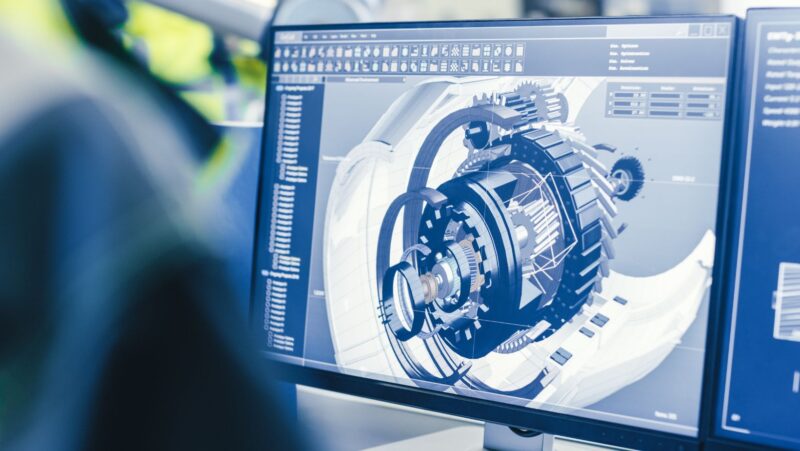
The 4-3-3 formation is now popular as one of the formations that integrate both the attacking style and defensive organization of a football team. This setup enables teams to capture large shares of possession, overload wide zones, and respond to game-changing events. Considered to be the perfect way of approaching the game, it is used by legendary teams and managers. However, what makes this formation so powerful, and how can the teams become fluent in it? Alright, let us explain it in a piece-by-piece manner.
The Core Structure of the 4-3-3
Fundamentally, the 4-3-3 is a formation that is very dynamic and is all about possessing and retaining the ball. This formation has four defenders, three midfielders, and three forwards, which provides both a strong defensive line and bench strength in attack. This setup keeps the team compact while offering width and creativity at the same time.
In defense, the four players align in a compact line as a way of denying the opponents spaces to maneuver, as they will have to play through a traffic jam. The midfield three allow for one of them to sit deep and shield the back four while the other two float in and out of the defense and attack. In turn, three forwards linger on the field, move to wider positions, and perform complex maneuvers to enter the adversary’s penalty area.
It is important to establish that this formation is all about balance. Every line of the players backs the next in defense and attack, which makes it a favorite for the teams that are targeting supremacy. And thanks to online betting sites Bangladesh, you can follow such teams and place bets on them. And do not forget to make a detailed analysis of the available statistics before placing a bet, as well as look at the available bonuses. This will allow you to make a more predictable bet, and the bonus will increase your profit without increasing the risk.
Why the 4-3-3 is a Game-Changer
The 4-3-3 is not just a formation but a way of life and a way of managing the team. Its attacking formation makes it possible for teams to force their moves on other teams using the additional forward. Particularly, this setup is useful in confrontations with narrow formations since it allows for the creation of space on the wings and produces pressure to expand the formation of the opposing team.
In a defensive manner, the 4-3-3 formation is just as strong. The three central midfielders are always a wall to the rear line to make sure that the opponents’ advances are stopped when they are dangerous. Though, when properly pressed, this formation can starve opponents, cause them to turn over, and give the team back the ball with pace.
Moreover, in the current generation of football, one of the biggest success factors is flexibility. The 4-3-3 enables managers to make changes to the position of players and their functions without changing the format, hence making it useful when facing different games.
Key Components of Success in the 4-3-3
Making the 4-3-3 work requires an understanding of the fine details. Here are the critical components:
- Fluid Midfield: This means that the midfield has to be quite versatile. The defensive-minded player sits in the center of the field, while the other two bring vitality and ideas.
- Dynamic Fullbacks: Fullbacks in a 4-3-3 setup are very important with regard to offering width. They have to be able to attack yet be defensive-minded at the same time.
- Pressing as a Unit: As has been mentioned, pressing begins with the forwards, though midfielders and defenders also implement it. This puts pressure on errors and restricts space on the ball for the rivals.
- Wide Forward Play: These players should be able to perform backside movements or make good crosses that will make the attacks unpredictable.
Should a team do well in these aspects, then the 4-3-3 formation can be taken to the cleaners and be a force to reckon with. And if you want to know more, subscribe to MelBet Instagram Bangladesh. There, you will find a lot of useful content from the world of sports, which will allow you to make more thoughtful bets and understand every moment of the game.
The Evolution of the 4-3-3
The formation has its antecedents in the total soccer of the 1970s, inspired by Johan Cruyff’s Ajax of Amsterdam and extended to Pep Guardiola’s Barcelona. They demonstrated how this formation could offer solidity at the back as well as potency in front of the goal.
Still, the 4-3-3 has evolved over time. Modern football indicates that it is to be changed based on the personalities of players. Some teams use a false nine instead of a genuine striker, while others use inside forwards or inverted wingers due to increased aim at goal. The development of pressing football has entrenched the 4-3-3 even more in modern football. Its small midfield and large forward line also suggest that it is usually composed to win the ball back quickly and then go forward. That is why 4-3-3 remains operational in the present era.
Challenges in Implementing the 4-3-3
Like any formation, the 4-3-3 has its own unique difficulties. It needs players who are very tactically disciplined and fit. Fullbacks, for example, are expected to race on the flanks and back and still be able to defend and attack.
This formation is also a bit problematic for teams that do not have a strong midfield line. In cases where the three midfielders are overwhelmed, the backs are left exposed, and there are weaknesses. Moreover, the high pressure applied by the 4-3-3 format exerts massive energy that may cause the team to get tired in the later parts of the match.
Last but not least, 4-3-3 is not the panacea for all oppositions. Opponents who have tactics revolving around low blocks often use it as a strategy to minimize the space the 4-3-3 aggressive offense depends on, thus constraining managers from seeking other options.
Why the 4-3-3 Stands Out
The 4-3-3 formation in football hasn’t been without its complications. However, it has landed as one of the most reliable formations of all time. It acts as a superb blend of attack and defense, which makes it ideal for both teams who like to have the ball and for those who like to sit back and soak up some pressure.
When total domination is the goal, the 4-3-3 does wonders. Its capacity to overemphasize wide zones and facilitate the provision of additional resources makes it nearly impossible for defenders to bear. At the same time, its dense midfield ensures that the team is still strong even when pressed.
The Final Whistle: The Beauty of 4-3-3
The 4-3-3 is the best formation one can employ in football. It illustrates the core of fashion, technicality, and innovation all at the same time. The exquisite feel of fullbacks storming ahead, blended with accurate passing from central midfielders and skillful wingers making curved runs, combines together. No formation has more or better visualization for modern football.
For the followers, it is pure poetry. For the competitors, it is truly challenging. For organizations, it is the path that leads them to greatness. The 4-3-3 is more than just a strategy. It acts as the lifeblood of soccer and yet again signifies that this beautiful sport is a game all about brains, heart, and persistence.









